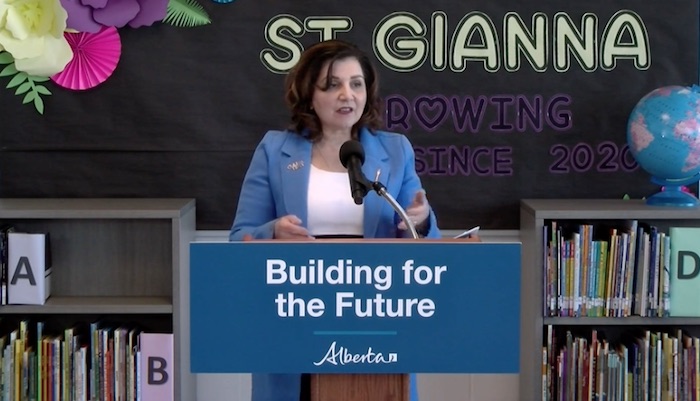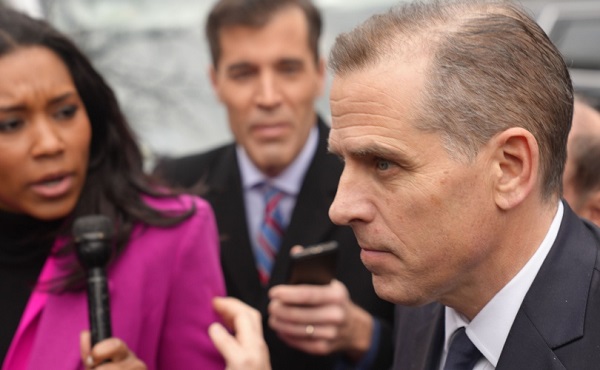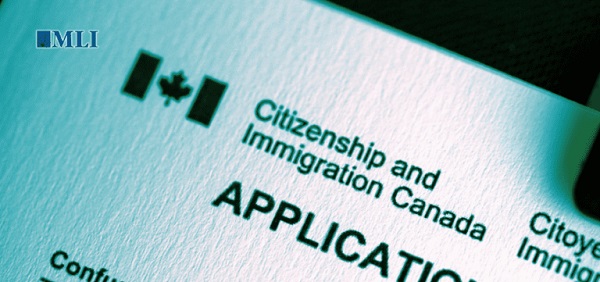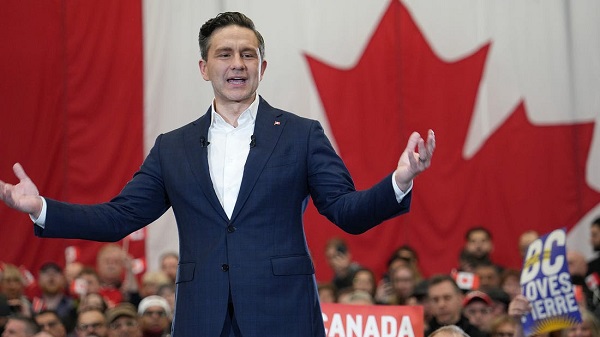Alberta
Education Minister Adriana LaGrange announces nearly 25,000 new and upgraded spaces for Alberta students

Investing in new schools, modernized spaces
Alberta’s government is investing $2.3 billion over the next three years, for new and modernized classrooms.
Budget 2023 supports 58 projects, which includes 13 full construction projects, 20 design, 14 planning and 11 pre-planning projects. In total, there will be nearly 25,000 new and additional spaces for students across Alberta – 9,400 new spaces and more than 15,500 student upgraded spaces. This includes approximately 4,500 new and upgraded spaces in Calgary, 4,100 in Edmonton and 16,300 for the rest of the province.
“Alberta’s young learners are the community and business leaders of tomorrow. They need the right spaces to gain the tools and skills needed to prepare for their bright futures. By investing in our schools, we’re investing in our students while at the same time creating more jobs and supporting the local economy.”
This investment in education infrastructure includes:
- $372 million for construction and design projects:
- 10 new schools
- 16 replacement schools
- seven modernizations
- $4 million to support planning activities such as site analysis and scope development for 14 projects
- $1 million to pre-plan 11 conceptual projects that are anticipated to become high-priority needs for school jurisdictions
- $1 billion to continue work on previously announced projects
- $300 million over three years in school authority self-directed capital projects
- $279 million to support the maintenance and renewal of existing school buildings through the Capital Maintenance and Renewal Program
- $171 million to support public charter school infrastructure, including investment for a charter hub in Calgary
- $43 million to fund facility upgrades for successful collegiate school applicants
- $93 million for the modular classroom program to address urgent space needs across the province
“The Alberta government is investing in critical infrastructure projects that include upgrading and building high-quality schools to ensure Albertans can send their children to schools in their local communities. Our focus is on ensuring these projects are delivered on time, on budget and where they’re needed.”
The availability of suitable sites has been one of the biggest roadblocks causing delays to school projects. That’s why, through Budget 2023, Alberta’s government is creating a new School Planning Program that will serve as a transparent “pipeline” for upcoming school projects to begin as soon as formal construction funding is approved. Fourteen school projects will begin planning and site development through this new program while a further 11 projects will receive pre-planning funding to assist with developing scope options.
The planning program will allow for the further development of project scope and site investigation work. It will also help to clarify potential risks and identify mitigating strategies and costs. The goal is to provide school boards with the resources they need to remove barriers and better position the project for design consideration and construction approval in future budget cycles, which is expected to reduce costs and minimize schedule disruptions and delays.
“The Calgary Catholic Board of Trustees is grateful for the capital projects announced for the Calgary Catholic School District, which includes full funding for the K-9 school in Nolan Hill to serve this rapidly growing community. We anticipate receiving the full construction funding for the Rangeview high school and Chestermere K-9 school as soon as possible, after the design process is completed. These projects need urgent attention given the critical need for school infrastructure and CCSD’s high utilization rate in these communities. CCSD appreciates the pre-planning commitment towards the construction of the K-9 school in Redstone, the addition/enhancement of Bishop McNally High School and the construction of a new west-end high school.”
“On behalf of CBE students and their families, we thank the Government of Alberta for the capital plan announcement. These extraordinary and timely investments in infrastructure are vital to support student learning opportunities within our system.”
“This is an exciting day for Elk Island Public Schools, for the community and especially for students of both École Campbelltown and Sherwood Heights Junior High. A modern, well-equipped and efficient building will allow us to continue to offer the quality education students need to succeed in the classroom and will help ease the growth pressures we are facing in Sherwood Park.”
Quick facts:
- Full construction funding activities include construction and post-occupancy review.
- Design funding activities include the preparation of construction tender documents such as drawings and specifications.
- Planning funding activities include site analysis and scope development activities.
- Pre-planning funding allows a conceptual project to define scope elements, programming priorities and includes activities such as community engagement.
- To support the decision-making process for delivering infrastructure projects, the Ministry of Infrastructure passed the Infrastructure Accountability Act in December 2021. This act outlines how the province prioritizes projects for the annual capital plan.
- As legislated by the act, the government also published Building Forward: Alberta’s 20-Year Strategic Capital Plan in December 2021, providing a blueprint for long-term infrastructure investment and development in Alberta.
- The government’s budget decisions are made in accordance with the act and are guided by the strategic capital plan to ensure future capital investments benefit Albertans.
- Government partners, such as municipalities and school boards, will also be able to plan for capital funding knowing the long-term direction of government.
Budget 2023 school projects – full construction funding (13):
| Community | School division | Project type/Name |
| Airdrie | Conseil scolaire FrancoSud | new secondary school |
| Calgary | Calgary Board of Education | modernization of John G. Diefenbaker High School |
| Calgary | Calgary Roman Catholic Separate School Division | new K-9 school in Nolan Hill |
| Edmonton | Conseil scolaire Centre-Nord | solution for École Michaëlle-Jean and École Gabrielle-Roy |
| Edmonton | Edmonton Public School Board | new K-9 school in Edgemont |
| Lethbridge | Holy Spirit Roman Catholic Separate School Division | new K-6 school in west Lethbridge |
| Lethbridge | Conseil scolaire FrancoSud | École La Vérendrye gym project |
| Okotoks | Christ the Redeemer Catholic Separate School Division | replacement of École Good Shepherd School |
| Penhold | Chinook’s Edge School Division | replacement of Penhold Elementary School |
| Raymond | Westwind School Division | new high school |
| Sherwood Park | Elk Island School Division | solution for Sherwood Park |
| Valleyview | Northern Gateway School Division | solution for Valleyview |
| Waskatenau | Lakeland Roman Catholic Separate School Division | replacement of Holy Family Catholic School |
Budget 2023 school projects – design funding (20):
| Community | School division | Project type/Name |
| Airdrie | Rocky View School Division | new K-8 school in southwest Airdrie |
| Barrhead | Pembina Hills School Division | modernization and rightsizing of Barrhead Composite High School |
| Blackfalds | Red Deer Catholic Separate School Division | new K-5 school |
| Bow Island / Burdett | Prairie Rose School Division | solution for Bow Island and Burdett |
| Breton | Wild Rose School Division | modernization and rightsizing of Breton High School and demolition of Breton Elementary School |
| Brooks | Grasslands School Division | replacement of Brooks Junior High School |
| Chestermere | Calgary Roman Catholic Separate School Division | new K-9 school |
| Calgary | Calgary Roman Catholic Separate School Division | new high school in Rangeview |
| Edmonton | Edmonton Catholic Separate School Division | solution for Rundle Heights |
| Edmonton | Edmonton Public School Board | new junior/senior high school in Glenridding Heights |
| Fort McMurray | Conseil scolaire Centre-Nord | replacement of K-12 École Boréale |
| Lac La Biche | Northern Lights School Division | replacement of Vera M. Welsh School |
| Leduc | Black Gold School Division | modernization of École Corinthia Park School |
| Mallaig | St. Paul School Division | replacement of École Mallaig School |
| Medicine Hat | Medicine Hat Roman Catholic Separate School Division | replacement of St. Francis Xavier School |
| Nanton | Livingstone Range School Division | solution for Nanton |
| Red Earth Creek | Peace River School Division | replacement of Red Earth Creek School |
| Spruce Grove | Parkland School Division | replacement of Spruce Grove Composite High School |
| Taber | Horizon School Division | modernization of the W.R. Myers and D.A. Ferguson schools |
| Wainwright | Buffalo Trail School Division | replacement of Wainwright School |
Budget 2023 – School Planning Program projects (14):
| Community | School division | Project type/Name |
| Airdrie | Rocky View School Division | new grades 9-12 school |
| Calgary | Calgary Board of Education | modernization of Annie Gale School |
| Calgary | Calgary Board of Education | new high school in Cornerstone |
| Coalhurst | Palliser School Division | modernization of Coalhurst High School |
| Donnelly | High Prairie School Division | G. P. Vanier School |
| Edmonton | Edmonton Catholic Separate School Division | new K-9 school in Heritage Valley Cavanagh |
| Edmonton | Edmonton Public School Board | new K-6 school in Rosenthal |
| Edmonton | Edmonton Public School Board | new elementary school in Glenridding Heights |
| Fort McMurray | Fort McMurray School Division | modernization of Westwood Community High School |
| Grande Prairie | Peace Wapiti School Division | new high school north of Grande Prairie |
| Lethbridge | Lethbridge School Division | modernization of Galbraith Elementary School |
| Okotoks | Foothills School Division | new high school |
| Stettler | Clearview School Division | modernization and addition at Stettler Middle School |
| Strathmore | Golden Hills School Division | replacement of Westmount School |
Budget 2023 – Pre-Planning Program projects (11):
| Community | School division | Project type/Name |
| Calgary | Calgary Board of Education | modernization of A.E. Cross School |
| Calgary | Calgary Board of Education | modernization of Sir John A. Macdonald School |
| Calgary | Calgary Board of Education | new Saddle Ridge middle school |
| Calgary | Calgary Roman Catholic Separate School Division | new elementary school in Redstone |
| Calgary | Calgary Roman Catholic Separate School Division | addition at Bishop McNally High School |
| Calgary | Calgary Roman Catholic Separate School Division | new west Calgary high school |
| Chestermere | Rocky View School Division | new K-9 school |
| Cochrane | Rocky View School Division | new K-5/K-8 |
| Edmonton | Edmonton Catholic Separate School Division | new north K-9 school |
| Edmonton | Edmonton Public School Division | new junior high school in Pilot Sound/McConachie |
| Red Deer | Red Deer Public Schools | new northeast middle school |
Alberta
Is Canada’s Federation Fair?


 David Clinton
David Clinton
Contrasting the principle of equalization with the execution
Quebec – as an example – happens to be sitting on its own significant untapped oil and gas reserves. Those potential opportunities include the Utica Shale formation, the Anticosti Island basin, and the Gaspé Peninsula (along with some offshore potential in the Gulf of St. Lawrence).
So Quebec is effectively being paid billions of dollars a year to not exploit their natural resources. That places their ostensibly principled stand against energy resource exploitation in a very different light.
You’ll need to search long and hard to find a Canadian unwilling to help those less fortunate. And, so long as we identify as members of one nation¹, that feeling stretches from coast to coast.
So the basic principle of Canada’s equalization payments – where poorer provinces receive billions of dollars in special federal payments – is easy to understand. But as you can imagine, it’s not easy to apply the principle in a way that’s fair, and the current methodology has arguably lead to a very strange set of incentives.
According to Department of Finance Canada, eligibility for payments is determined based on your province’s fiscal capacity. Fiscal capacity is a measure of the taxes (income, business, property, and consumption) that a province could raise (based on national average rates) along with revenues from natural resources. The idea, I suppose, is that you’re creating a realistic proxy for a province’s higher personal earnings and consumption and, with greater natural resources revenues, a reduced need to increase income tax rates.
But the devil is in the details, and I think there are some questions worth asking:
- Whichever way you measure fiscal capacity there’ll be both winners and losers, so who gets to decide?
- Should a province that effectively funds more than its “share” get proportionately greater representation for national policy² – or at least not see its policy preferences consistently overruled by its beneficiary provinces?
The problem, of course, is that the decisions that defined equalization were – because of long-standing political conditions – dominated by the region that ended up receiving the most. Had the formula been the best one possible, there would have been little room to complain. But was it?
For example, attaching so much weight to natural resource revenues is just one of many possible approaches – and far from the most obvious. Consider how the profits from natural resources already mostly show up in higher income and corporate tax revenues (including income tax paid by provincial government workers employed by energy-related ministries)?
And who said that such calculations had to be population-based, which clearly benefits Quebec (nine million residents vs around $5 billion in resource income) over Newfoundland (545,000 people vs $1.6 billion) or Alberta (4.2 million people vs $19 billion). While Alberta’s average market income is 20 percent or so higher than Quebec’s, Quebec’s is quite a bit higher than Newfoundland’s. So why should Newfoundland receive only minimal equalization payments?
To illustrate all that, here’s the most recent payment breakdown when measured per-capita:
 |
For clarification, the latest per-capita payments to poorer provinces ranged from $3,936 to PEI, $1,553 to Quebec, and $36 to Ontario. Only Saskatchewan, Alberta, and BC received nothing.
And here’s how the total equalization payments (in millions of dollars) have played out over the past decade:
Is energy wealth the right differentiating factor because it’s there through simple dumb luck, morally compelling the fortunate provinces to share their fortune? That would be a really difficult argument to make. For one thing because Quebec – as an example – happens to be sitting on its own significant untapped oil and gas reserves. Those potential opportunities include the Utica Shale formation, the Anticosti Island basin, and the Gaspé Peninsula (along with some offshore potential in the Gulf of St. Lawrence).
So Quebec is effectively being paid billions of dollars a year to not exploit their natural resources. That places their ostensibly principled stand against energy resource exploitation in a very different light. Perhaps that stand is correct or perhaps it isn’t. But it’s a stand they probably couldn’t have afforded to take had the equalization calculation been different.
Of course, no formula could possibly please everyone, but punishing the losers with ongoing attacks on the very source of their contributions is guaranteed to inspire resentment. And that could lead to very dark places.
Note: I know this post sounds like it came from a grumpy Albertan. But I assure you that I’ve never even visited the province, instead spending most of my life in Ontario.
Which has admittedly been challenging since the former primer minister infamously described us as a post-national state without an identity.
This isn’t nearly as crazy as it sounds. After all, there are already formal mechanisms through which Indigenous communities get more than a one-person-one-vote voice.
Subscribe to The Audit.
For the full experience, upgrade your subscription.
Alberta
Big win for Alberta and Canada: Statement from Premier Smith

Premier Danielle Smith issued the following statement on the April 2, 2025 U.S. tariff announcement:
“Today was an important win for Canada and Alberta, as it appears the United States has decided to uphold the majority of the free trade agreement (CUSMA) between our two nations. It also appears this will continue to be the case until after the Canadian federal election has concluded and the newly elected Canadian government is able to renegotiate CUSMA with the U.S. administration.
“This is precisely what I have been advocating for from the U.S. administration for months.
“It means that the majority of goods sold into the United States from Canada will have no tariffs applied to them, including zero per cent tariffs on energy, minerals, agricultural products, uranium, seafood, potash and host of other Canadian goods.
“There is still work to be done, of course. Unfortunately, tariffs previously announced by the United States on Canadian automobiles, steel and aluminum have not been removed. The efforts of premiers and the federal government should therefore shift towards removing or significantly reducing these remaining tariffs as we go forward and ensuring affected workers across Canada are generously supported until the situation is resolved.
“I again call on all involved in our national advocacy efforts to focus on diplomacy and persuasion while avoiding unnecessary escalation. Clearly, this strategy has been the most effective to this point.
“As it appears the worst of this tariff dispute is behind us (though there is still work to be done), it is my sincere hope that we, as Canadians, can abandon the disastrous policies that have made Canada vulnerable to and overly dependent on the United States, fast-track national resource corridors, get out of the way of provincial resource development and turn our country into an independent economic juggernaut and energy superpower.”
-

 2025 Federal Election2 days ago
2025 Federal Election2 days agoMark Carney refuses to clarify 2022 remarks accusing the Freedom Convoy of ‘sedition’
-

 Catherine Herridge1 day ago
Catherine Herridge1 day agoFBI imposed Hunter Biden laptop ‘gag order’ after employee accidentally confirmed authenticity: report
-

 International1 day ago
International1 day agoTrump’s ‘Golden Dome’ defense shield must be built now, Lt. Gen. warns
-

 2025 Federal Election1 day ago
2025 Federal Election1 day agoDon’t let the Liberals fool you on electric cars
-

 Crime1 day ago
Crime1 day agoFirst Good Battlefield News From Trump’s Global War on Fentanyl
-

 Courageous Discourse10 hours ago
Courageous Discourse10 hours agoEurope Had 127,350 Cases of Measles in 2024
-

 COVID-192 days ago
COVID-192 days agoMaxime Bernier slams Freedom Convoy leaders’ guilty verdict, calls Canada’s justice system ‘corrupt’
-

 Immigration2 days ago
Immigration2 days agoImmigrant background checks are unrelated to national security?





